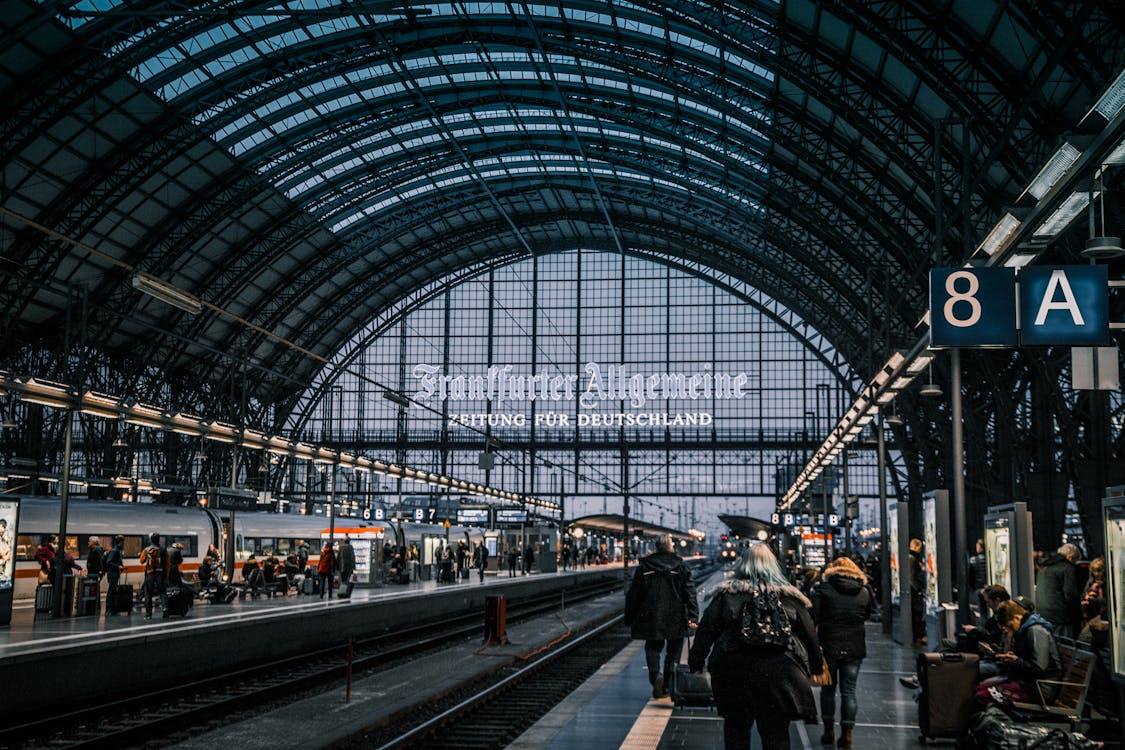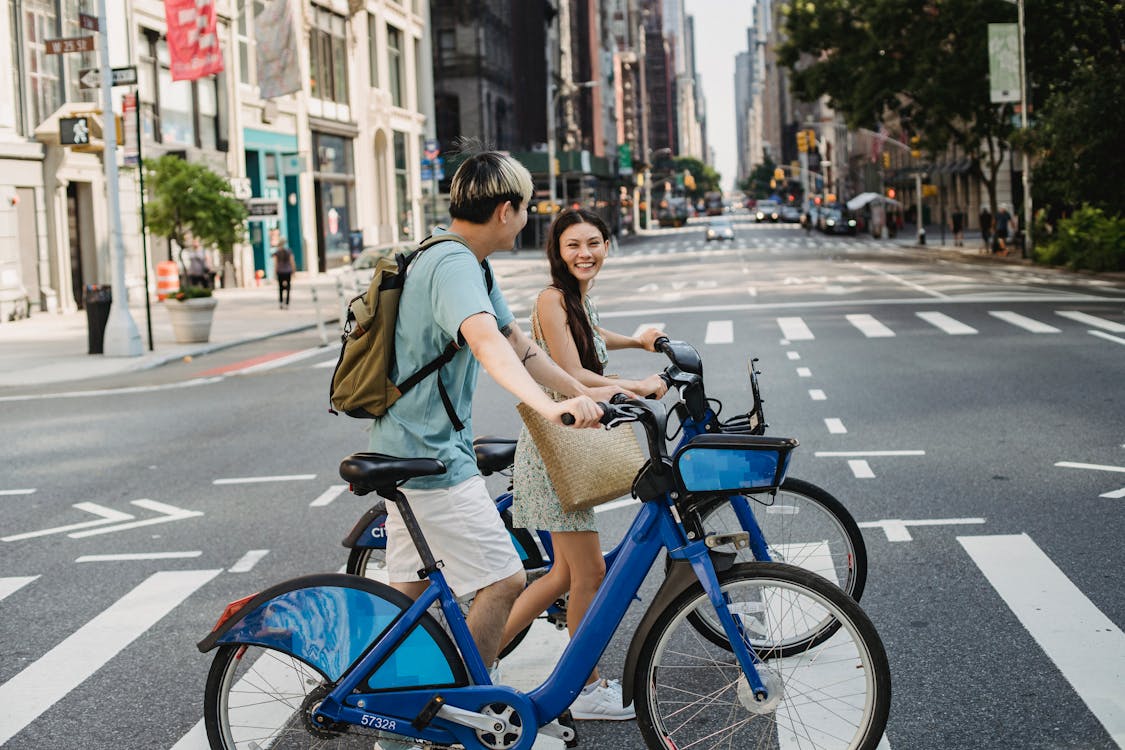Cars have long been symbols of status, from their early invention up to modern day 21st century. Owning a vehicle is also a major milestone for most. It’s even one of the biggest purchases that most people look forward to. But with all the popularity surrounding cars, we lose sight of something crucial. It’s that no matter how good, anything in excess is bound to have negative consequences.
Vehicles produce carbon emissions, one of the largest sources of air pollution on our planet. And with the countless number of cars on the road, it’s no challenge to guess what’s happening to our climate.
In this piece, we’ll talk about how public transportation can mitigate the effects of carbon emission. We’ll also touch on the benefits of having people-centric cities.
The United Nations Sustainable Development Goal (UN SDG) 13
The SDGs are a set of 17 goals created by the UN to achieve a better and more sustainable future for all. The 13th goal focuses on taking urgent action to combat climate change. It includes reducing our carbon emissions from transportation.
Carbon Dioxide Emissions
Before we tackle the solutions, let’s look at what we’re up against. Carbon dioxide emissions or carbon emissions are the primary form of greenhouse gas due to humans.
Burning car gasoline and fuels make up more than 14% of global CO2 emissions. These gases create air pollution. They also contribute to global warming and lead to acid rain. In 2021, transport sources made up around 28% of all emissions in the United States. That’s around 5.5B tons of CO2 released.
What do these numbers mean for us? These figures reflect how immense the problem is due to how many cars graze the roads every single day.

Public Transportation — The Key To Mitigating Carbon Emissions
To reduce the effects of carbon emission, the best solution is to decrease our reliance on cars. Public transportation can help us do this. It encourages people to ditch their own vehicles and opt for public transport instead. This reduces emissions and helps maintain a healthy environment. It also makes sense financially as it gives you more for less money. No need to worry about gas prices, no need to pay for parking fees.
Furthermore, public transportation also promotes social connectivity and boosts the economy. Think of it this way: imagine a bus that houses about 40-50 people. Of course, that bus produces carbon emissions. But it won’t be as much as if those 50 people were all in separate vehicles.
Trains also have the same benefits. They carry more people and could be considered even more convenient. No need to worry about traffic jams as well. If you can, CO2 emissions from electric vehicles are lower than emissions associated with gas-powered cars.
People-Centric Cities: The Second Key
People-centric cities will also help reduce carbon emissions. Today, there’s no doubt that most major cities are built to house cars rather than people. Cars are prioritized with wide roads and parking spaces taking up a lot of valuable space.
This is something that needs to be reversed. People-centric cities make it easier to promote public transportation. They do so by increasing walkability and bike-friendliness. This type of city doesn’t mean cars are banned, but rather that they are given less emphasis.

When we prioritize people, we mean:
1. Providing wide and convenient sidewalks. This makes it easier for people to walk, thus reducing the need for cars. Convenient sidewalks mean they are maintained, well-lit, and easy to navigate.
2. Enhancing bike-friendliness. This could include bicycle lanes, racks to store bikes, and bike-sharing programs.
3. Creating public spaces. Increased public spaces means more people can mingle and socialize.
4. Establishing mixed-use development. This is when homes and businesses are located in close proximity. Thus, the need to drive is lowered.
5. Supporting public transportation. This could include more buses, subways, trams, and trains.
Reducing Carbon Emissions, Protecting the Planet
The task of reducing carbon emissions is immense, but it’s not impossible. To make a lasting change, we need to act as a collective. Everyone from those in positions of power to citizens have a role to play in reaching this goal. We can strengthen the fight and support UNSDG13 with the following strategies:
Make Public Transportation Accessible, Efficient, & Affordable
As mentioned a few times, public transportation stands at the core of reducing carbon emissions. It needs to be efficient and accessible so that people have an incentive to take it. It should also be affordable so that more people can make use of it. Leaders and policy makers should implement laws to make public transport easier.

Increase Walkability & Bike-Friendliness
People-centric cities make it easier to walk or bike. This leads to less carbon emission and helps people stay fit and healthy. We can reduce our reliance on cars by:
- Increasing the number of bicycle lanes
- Installing more bike racks
- Providing more options for people to get around

Increase Awareness & Promote Education On Climate Change
It’s important to spread awareness about climate change. This goes hand in hand with educating people on why it’s crucial to reduce carbon emissions. People need to understand how climate change affects our lives. We must also be aware of how our lifestyle choices affect the planet. When we all understand our actions, we can be more careful and deliberate.
Promote Green Mobility Solutions
Finally, we can explore green mobility solutions. Prominent examples are electric vehicle options (EVs) and renewable energy sources. These solutions can help reduce our carbon footprint. In turn, we can make a lasting impact on our environment. An electric car produces less greenhouse gas emissions than a gasoline car. These traditional cars often come with an internal combustion engine.
Invest in Research & Development for Renewable Energy Sources
There’s still much to be done in terms of creating renewable energy sources. We can explore solar, wind, and hydro energy further. Governments should invest more in research and development for such technologies. They need to incentivize businesses to pursue these solutions too.
After all, emissions from electric grids also account for much of our carbon footprint. Even today, we rely on the fossil fuel route to power establishments. Our planet would undoubtedly do well with electricity generation from renewable sources.

B-Line Urban Delivery: A Partner in Caring for the Planet
B-Line Urban Delivery is a B Corp-certified transportation company. Focusing on deliveries, they advocate for green transportation solutions. They are also actively working toward reducing what they emit. With commercial grade trike trucks, B-Line partners with companies of all sizes. They handle their clients’ downtown and close-in delivery needs.
To Wrap Up
Each one of us has a role to play in lowering carbon emissions and fighting against climate change. Policy makers must make it easier for citizens to access public transportation. In turn, citizens must make conscious decisions toward sustainability. We can all make a difference. We need to promote green mobility solutions and invest in renewable energy sources as well.
However, it’s important to remember that people come first. With people-centric cities, public spaces, walkability, and bike-friendliness, everyone is included. We only have one planet. So, let’s take care of it. Let’s do our part and make the world a better place for now and for the future generations.

